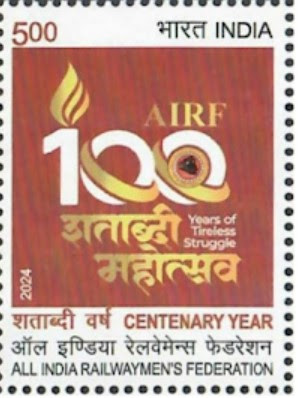India Post released a commemorative postage stamp on the occasion of valedictory ceremony of the Birth Centenary Celebrations of Dr. Sri Shivarathri Rajendra Swamy by Minister for State Communications Shri Manoj Sinha in presences of Saints and other dignitaries on 27th August 2016 at the function held at Suttur Mutt in Mysore District.
Suttur Simhasana Mahasansthana Math is about one thousand years old in the ancient cultural and religious history of Karnataka. In the 10th Century Sri Shivarathri seer did penance for a very long time in Siddhagiri hills and came to the south and engaged in penance again at Suttur. Dr. Shivarathri Rajendra Mahaswamiji was the 23rd pontiff of the Suttur Mutt.
Suttur Simhasana Mahasansthana Math is about one thousand years old in the ancient cultural and religious history of Karnataka. In the 10th Century Sri Shivarathri seer did penance for a very long time in Siddhagiri hills and came to the south and engaged in penance again at Suttur. Dr. Shivarathri Rajendra Mahaswamiji was the 23rd pontiff of the Suttur Mutt.
Club News
Recent national level stamp exhibitions
Naturepex-2016, National Philatelic Exhibition on Nature and Environment will be organized by the Eastern India Philatelists’ Association with active support of the Department of Posts, Government of India from 30th September to 2nd October, 2016 at KiiT International School, Bhubaneswar-751024, Odisha with an objective to aware people for protection of natures and conserve our environment. The exhibits relating to Nature, Flora & Fauna, Environment and related subjects will only be exhibited in this exhibition. The exhibition will be of 400 frames and will be competitive one.
During Naturepex-2016 exhibition a number of Philatelic activities like Stamp Design contest, Quiz competition and Letter Writing competitions will be held at the venue.
Website : www.naturepex2016.blogspot.in
SIPA Diamond 2016, Diamond Jubilee Stamp Exhibition
25th - 27th November 2016
South India Philatelists' Association will be organizing Diamond Jubilee Stamp Exhibition from 25th to 27th November 2016 at Chennai.
Venue:
St. Bede's Centenary Auditorium,
No. 37, Santhome High Road,
Santhome, Mylapore, Chennai - 600 004.
St. Bede's Centenary Auditorium,
No. 37, Santhome High Road,
Santhome, Mylapore, Chennai - 600 004.
For more information contact: Phone : +91-44-32001626, 32914769,
Mobile : +919840645487, +919444491111
E-Mail : sipagold@gmail.com
Mobile : +919840645487, +919444491111
E-Mail : sipagold@gmail.com
Website : sipa.org.in/stampshow.html
International Exhibition
Mr.
Madhukar Jhingan is the Indian National Commissioner for the MELBOURNE 2017.
MELBOURNE 2017, 34th
FIAP Asian International Stamp Exhibition will be held in Melbourne, Australia
from 30 March to 2 April 2017.
MELBOURNE 2017 will have following classes:
FIAP Championship
Class, Traditional, Postal History, Postal Stationery, Aerophilately,
Astrophilately, Thematic, Maximaphily,
Revenue, Open, Youth, Literature, One Frame and Modern Philately (1980
onwards).
The Entry Fee for One-Frame Exhibit is US$80, and for Literature
the Fee is US$55 per exhibit. The participation is free for Youth Class. The
Entry Fee for all other classes is US$55 per frame.
The Entry Forms are now available for
download http://stampsofindia.com/MELBOURNE2017.htm
Those interested in participating may
please contact Mr. Madhukar Jhingan, National Commissioner for India of
MELBOURNE 2017.
Last date for submitting the forms to
the National Commissioner is October 14, 2016




























































.png)












